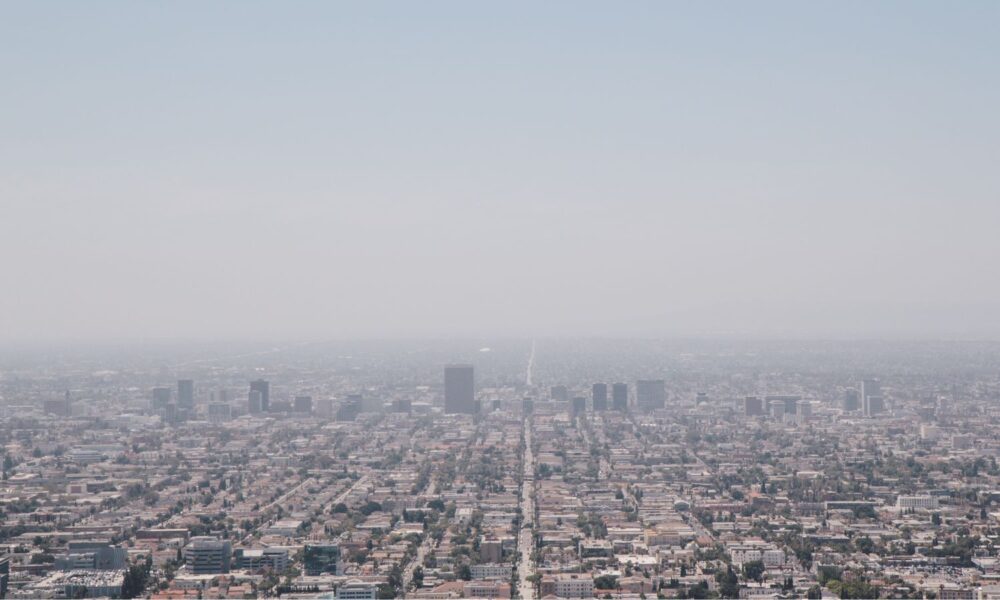Earlier this month, the Environmental Protection Agency’s (EPA) Clean Air Scientific Advisory Committee (CASAC) released a draft set of recommendations calling on the EPA to tighten its current standard for ground-level ozone pollution to protect public health. Specifically, six out of seven CASAC members stated that the EPA needs to lower the primary standard for ozone pollution to somewhere between 55 to 60 parts per billion (ppb) from the current standard of 70 ppb.
But will the EPA follow CASAC’s recommendations? The agency has a checkered history on this issue and the Biden administration’s take on ozone standards is already foreshadowing a potentially problematic ruling.
Ground-level ozone pollution is a nasty air pollutant that can cause lung problems and asthma attacks. If you’ve ever been outside in an urban environment on a hot sunny day and wondered why the air just seemed worse in your lungs—think sore and scratchy throat or difficulty breathing while doing exercise—you have likely experienced some of the health effects associated with ozone pollution. Unlike other major air pollutants, ground-level ozone is not emitted directly into the air but is created by chemical reactions between nitrogen oxides and volatile organic compounds, meaning that ozone pollution is tied to sources that emit these precursor chemicals, such as heavy duty vehicles.
Studies have shown that people experiencing elevated days of ozone pollution can result in increases in missing school or work and visiting the hospital or emergency room for asthma exacerbations; ozone pollution even increases the risk of premature death. And, as the CASAC draft report discusses in depth, some groups of people face an elevated risk of health effects, including children, people with asthma, outdoor workers, and communities of color.
Sadly, the process of setting an outdoor ozone pollution standard has a long history of being undermined by political leaders under the Bush, Obama, and Trump administrations. This track record is even more troubling considering that the Clean Air Act requires that only science can be used when setting the standard for major ambient air pollutants, something I covered in depth in a previous blog post.
As the EPA works through the process of setting a new ozone pollution standard, it is unfortunately all too easy to imagine a future where history repeats itself and the EPA once again sidelines science and fails to fully protect people from this dangerous air pollutant.
Setting the ozone standard is supposed to be a fully science-based process…
CASAC is a group of highly respected independent experts tasked by the Clean Air Act to provide science-based advice on national ambient air quality standards, including on the recent processes to update the EPA’s particulate matter standard. And it is a big deal when CASAC weighs in on the EPA’s scientific and policy reports for a pollutant such as ground-level ozone.
Here’s how the process is supposed to work. For major ambient air pollutants, the EPA is charged with assessing the state of the science every five years or so, producing two important assessment reports. One EPA report examines the latest scientific evidence on the air pollutant and how it can lead to health and welfare effects; the second report uses this science as a basis to form a set of policy options, which the agency can then use during its rulemaking process.
CASAC reviews these reports to, in essence, give the agency a nuanced thumbs up or thumbs down about them and to provide a set of evidence-based recommendations detailing what the air pollution standards should be. While the EPA is not required by law to follow CASAC’s recommendations, it is a really bad look if the agency fails to do so; the EPA administrator is even required to explain the reasoning for deviating from CASAC recommendations. And honestly, there aren’t a lot of good reasons to ignore CASAC’s recommendations, at least if you believe that the best available science should drive the process.
…But history shows a different story
There is ample reason to be concerned about whether the EPA under the Biden administration will fully commit to this science-based process. If we look at the history of how the ozone standard has been set during the 21st century, we see a road of broken dreams, in which the EPA has promised to follow the science only to scuttle off and set the standards far too high when push comes to shove.
UCS has been watchdogging the issue since 2007, when we called out the Bush administration for blatantly ignoring CASAC’s recommendations to set the ozone standard to between 60 to 70 ppb. For reasons that had nothing to do with science—President Bush intervened shortly before the finalized regulations were to be issued and pressured the EPA to do an “emergency rewrite”—the EPA administrator set the ozone standard to 75 ppb.
The Obama administration continued this ugly tradition. In 2011, President Obama interfered with the EPA and pressured the agency to withdraw their draft ozone rule, delaying the rulemaking process by two years. In 2014, when CASAC weighed in and suggested a standard between 60 to 70 ppb, the advisory committee was explicit in stating that setting a standard at 70 ppb would be a very bad idea. The science at the time was showing that this measure would likely not protect public health, especially in groups of people who are more vulnerable to health impacts from ozone pollution. In 2015, when the EPA set what is now our current ozone standard of 70 ppb, the agency chose to ignore CASAC’s concerns about setting the standard at such a high level.
And, perhaps unsurprisingly, the Trump administration took this sidelining of science to a whole new level. In 2017, EPA administrator Scott Pruitt tried to delay the implementation of the 2015 ozone standard based on what he termed “insufficient scientific evidence,” until a major lawsuit forced the EPA to implement it. In 2018, the Trump administration completely nixed the EPA’s ozone review panel – an advisory committee that specialized in the science of ozone pollution and helped inform CASAC’s science-based recommendations. In 2020, the EPA attempted to issue a new rule on the ozone standard using a flawed and expediated process and concluded that the status quo of 70 ppb standard was good enough.
The current EPA is no exception
The EPA under Biden administration has already shown some signs of continuing this problematic history. Last year, the EPA issued a draft policy assessment that concluded that the 70 ppb is just fine. The agency concluded this despite an increase of strong scientific evidence showing that levels of ozone pollution below 70 ppb can be dangerous to human health (see the American Lung Association’s recent public comment to the EPA for further information).
CASAC members were so disturbed by the EPA’s draft policy assessment that they took the rare and unprecedented step of pausing the review process. The advisory committee said that they can’t weigh in on the policy options and instead needed to go back a step to review the science.
In the recent draft report released this month, the advisory committee once again hammered home this point and chided the current EPA on their poor procedures in reviewing the science, citing in particular how the agency prioritized certain forms of scientific evidence over others in a way that would drown out the health effects experienced by more sensitive populations, especially children, outdoor workers, and people with asthma. CASAC’s conclusion: EPA needs to drastically lower the standard to 55 to 60 ppb in order to be protective of public health.
Seriously EPA, do better and follow the science
In the next few month, the EPA faces a major choice. Will it follow the recommendations of CASAC to the fullest extent possible and thereby provide the strongest science-based protections to protect the country from ground-level ozone pollution, including populations most at risk of developing health effects when exposed to ozone? Or will the agency choose a standard that deviates from the best available science—as it did under all three of the most recent presidential administrations—and thereby fail to protect the health and safety of people across the nation from this pollutant?
If the EPA truly believes in its science-based mission statement to “protect human health and the environment,” it will buck this temptation and follow CASAC’s recommendations to tighten the ozone standard and safeguard the health of millions of people.

